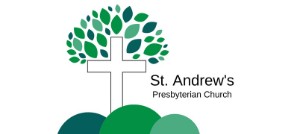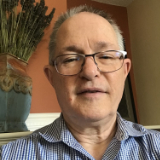Where is Jesus?
Third Sunday of Lent
Our scripture passage this morning is from the gospel of John. We encounter Jesus at the Pool of Israel, at the scene of a miraculous healing of a man crippled for 38 years.
As we begin, it’s helpful to be reminded of the context of this healing, both within John’s gospel and within the context of city of Jerusalem at the time. Bear with me as we look at what Biblical scholarship tells us about these contexts because it is very important to understanding the impact of our scripture both then and now.
The gospel of John does not have its own dedicated year in the three-year lectionary cycle that we follow at here at St. Andrew’s. Instead, John’s gospel is included at various times in the lectionary readings because it offers us a different perspective on Jesus’ life than that of Matthew, Mark, and Luke… the synoptic gospels.
The Gospel of Mark starts with Jesus’ baptism. Matthew starts with his genealogy. Luke starts with his birth. But John starts by answering the question ‘Who was Jesus?’: In the beginning was the Word, and the Word was with God, and the Word was God (1:1) … No one has ever seen God. It is God the only Son, who is close the father’s heart, who has made him known (1:18). This perspective – from John’s gospel – of the identity of Jesus has been the most influential in Christian theology of any of the 4 gospels.
In John’s gospel we hear Jesus’ remarkable “I am” statements… that echo the Old Testament name for God: Yahweh- “I AM”: I am the bread of life (6:35); I am the light of the world (8:12); I am the good shepherd(10:11); I am the resurrection and the life(11:25); I am the way the truth and the life(14:6). When you put them together like that, they present a very impactful, powerful portrait of who Jesus is! And it is image of Jesus neither described or envisioned the same way in the synoptic gospels.
Also, while there are 30 different miracles in the synoptics, there are only 7 of them in John. John refers to these 7 miracles as signs. “This is the first sign…” (water into wine, 2:11); “This is the second sign…” (healing of the official’s son, 4:54), and so on.
Each one has a special purpose: – Johns call them “signs” to indicate that they are specifically given to reveal Jesus’ identity:
• Water into wine at the wedding (2, symbolizing new covenant);
• healing the royal official’s son (4, symbolizing gentile inclusion in the gospel);
• healing the cripple man (5, symbolizing the grace over law);
• feeding the 5000 (6, Jesus is the bread of heaven, symbolizing spiritual food);
• walking on water (6, symbolizing Jesus’ lordship over creation);
• raising Lazarus (11, symbolizing victory over death – the great climax of the signs).
John is painting a portrait of Jesus the Messiah: Emmanuel… God with us!
Our text for the morning is the third “sign” of Jesus’ divine identity – the healing of the man who had been ill for 38 years. It’s the sign that, above all else, Grace – the unmerited, yet most to be treasured favour of God – triumphs over the law and all other things, and bringing the victory of everlasting life!
The scene in this chapter is also a shift, suddenly, from Jesus in Galilee to his arrival in Jerusalem for a festival of the Jews (5:1). (John notes 3 visits to Jerusalem, whereas only one of those visits is recorded in the synoptics). The setting is the Valley of Bethsaida next to the northern city wall, specifically, at the location of the water reserves for the city. In fact, there were a number of reservoirs for the storing of water, but this would be the largest, and was the main source for temple activities. The Sheep Pool (the Pool of Israel), adjacent to the city wall, was about the size of a football field and 100 feet deep! It was used for the washing of sacrificial animals, cleaning out the sacrifice area within the temple, and also processing the human waste for vast crowds. It’s just part of the back-end operation of the temple in the water management area. It is not pristine, potable water. The public doesn’t come to this pool. Eusebius, the 4th century writer who chronicled 340 biblical sites refers to the waste and sludge collect in the bottom of these pools. Indeed, he wrote that, though after centuries in disuse, the north pool was still stained purple red from the sheep washed there.
In our passage we learn: ‘Here …lay many invalids – blind, lame, and paralyzed’ (5:3). The desperately congregate here because of a long-standing legend that occasionally an angel would disturb the waters and whoever got in first was healed. Every person clawed over the other, and this long-crippled man has had no chance to receive that healing.
This is where we find Jesus of Nazareth? The Messiah? The I Am of God… on this visit to Jerusalem?!
The meaning of the healing isn’t so much in what Jesus did – i.e. abruptly heal a man long crippled: “Stand up, take your mat and walk.” More astounding is the realization that the Son of God – the Light of the World … the Resurrection – could first go there to that backend Pool – two hundred and fifty meters from the Holy of Holies in the inner Sanctuary of the temple! God was there, at the pool with the desperate. We know the gospel teaches us that God is everywhere, but this reminds us that God is especially in those places we easily, even deliberately overlook. The Presence of God does not need the wind to blow through the Sheep Pools. Jesus comes… and the man is healed right there where he has laid for 38 years.
I remember visiting Dave Stewart at the Upper Room on Pandora Ave., a street that is know for its squalor and desperation. Drug users, alcoholics and the marginalized are laying about everywhere -in frayed tents and huddled in doorways, with garbage and abandoned junk strewn in the gutters. I remember Dave getting up suddenly from our conversation, and heading out the door. I watched as he approached two men about to get into a fist fight over something, and a crowd had gathered to watch. He stepped between them… calling them both by name. His presence and his voice was like Christ’s to them. David got others in the crowd to walk with each of the men… in opposite directions. His presence was an everyday miracle on Pandora Ave. The miracle touch of a man of God, who knew them by name, and who they recognized as their friend. I wonder if that might be where we would first find the Son of God if he were to come in the flesh again this week.
Finally, this passage is about the why of this healing. Because Jesus does this on the Sunday (Sabbath). The authorities who had begun to “persecute” Jesus when the authorities learned he was healing on the Sabbath – which was prohibited. They even told the man he couldn’t carry his mat on the Sabbath – his first steps in nearly forty years, they saw only a man carrying a mat. What irony! To the whole conflict between religious tradition and actions born of true love, Jesus says this: “Just at the Father raises the dead and gives them life, so also the Son gives life to whomever he wishes.” (5:21). The amazing grace of God reigns over all things.
What can we make of all this in terms of our daily lives? Clinical psychology has taught us that the most fearful thought in human experience is utter aloneness. C.S. Lewis tends to view hell this way: it is the place where, by our own choice, God is not.
But the miracle of the gospel, is that even in the backwaters of loneliness and utter despair, God is there. Indeed, God goes there first. While the holy of holies awaits, Jesus there with the hopeless at the back end of the sewars of Jerusalem.
In your own journey this week, have faith in Christ who is the great miracle and glorious gift of the I AM. This week … remember to look for the Presence of Jesus in places you might not expect to find him, yet perhaps where he is first to be found.
At this communion table we turn to the One who offers the true and living water that stays with us to eternity. Here we come to the One who saved the man who was too slow to climb into the healing waters of Siloam.
Today we are served his bread and lift our hands to receive his cup. We also hear his voice – dry from carrying the burden of our salvation, saying, “Remember me when you drink of this cup”.
Remember Jesus mercy and grace on the cross gifted eternal life to the man beside him.
Remember his prayer to God, “Father forgive” those who put him on the cross.
Remember his gift of salvation to “whosoever” believes in every time and all the places of the world.
We do this – in remembrance of Jesus – empowered by his last words to us: “As God has sent me … so I am sending you.”
In the name of the Father, and the Son, and the Holy Spirit. Amen.

